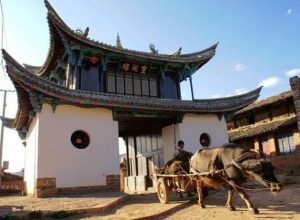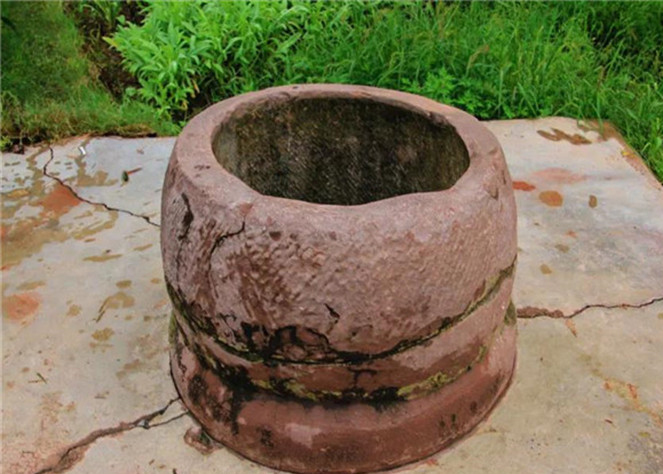Lianxiangguan Ancient Village in Lufeng County, Chuxiong

Attractions Overview
Lianxiangguan Ancient Village, known as the gathering place of salt merchants, has a long history, characterized by multi-culture. It thrived and declined due to the salt. Lianxiangguan has remained the relatively complete traditional urban pattern, which generated unique and profound culture and blended into the inclusive ancient architectural culture.
Chinese Name:禄丰县炼象关村
Chinese Pinyin: Lufeng Xian Lianxiangguan Cun
English Name: Lianxiangguan Ancient Village in Lufeng County, Chuxiong
Attraction Type: Ancient Village
Seasons: Four seasons
Recommended Visiting Time: 2 hours
Opening Time: All day long
Admission Fee: Free
Location: Lianxiangguan Village Committee, Jinshan Town, Lufeng County, Chuxiong (楚雄禄丰县金山镇炼象关村委会境内)
Why is Lianxiangguan Ancient Village So Special
Lianxiangguan Ancient Village, known as the gathering place of salt merchants, has a long history, characterized by multi-culture. It thrived and declined due to the salt. Lianxiangguan has remained the relatively complete traditional urban pattern, which generated unique and profound culture and blended into the inclusive ancient architectural culture. Ancient dwellings, religions, memorial archways, pavilions, and styles remain as before, with a clear historical and culture context and distinctive features. It preserves precious cultural heritage, such as temples, squares, houses, ancient carvings, wood carvings, ethnic culture, and food culture. It is based on the unique geographical environment and the traditional architecture of the traditional style. The combination of humanistic environment has become the unique museum of ancient architecture and culture in Yunnan. The tourism resources of Lianxiangguan are centered on ancient buildings, with the ancient village market as the carrier, combining with humanity, natural landscape, unique connotation, obvious features. Meanwhile, Lianxiangguan Ancient Village has the ornamental, recreational and use value. In February 2002, it was named as a provincial-level historical and cultural village by the provincial people’s government.
Where is Lianxiangguan Ancient Village
Lianxiangguan (炼象关) Ancient Village is located in the Lianxiangguan Village Committee, Jinshan Town, Lufeng County, 80 kilometers away from Kunming, 86 kilometers away from Chuxiong and 18 kilometers away from Lufeng County. It is the main thoroughfare to the western Yunnan, also the intersection of Dianchi Culture and Erhai Culture.
How to Get There
It is 18 kilometers from downtown of Lufeng County. It is convenient to get to Lianxiangguan Ancient Village. Taxi or self-driving is the best way to get there.
Best Time to Go

It is suitable to visit Lianxiangguan Ancient Village at any time. Every season, visitors can experience the unique culture and rich folk customs.
Nearby Attractions
The Grand Courtyard of Wu Family
The Grand Courtyard of Wu Family is a typical Ming and Qing architecture that has been preserved to now. The Grand Courtyard of Wu Family was built in the 16th year of Daoguang in Qing Dynasty. It was expended in the 7th year of Xianfeng in Qing Dynasty and was built along the mountain. It is a “王(Wang)-shape”, with a unique layout. It consists of four patios with 99 houses. It, with a building area of 10,000 square meters, is well-connected and is one of the rare ancient residential buildings in Yunnan.
Feilaisi Temple
Feilaisi Temple is located at the hillside. Because of the steep mountain, looking from the bottom of the mountain, the whole temple is like a big bird entwined in the mountain. It seems to be flying and it also seems to have just landed from the sky. Therefore, Feilaisi Temple got its name. Looking down from the temple, the Longchuanjiang River(龙川江) passes through the deep canyon, and the town’s buildings are dotted on both sides of the river.
Heijing Confucius Temple
The Heijing Confucian Temple is located in the Longchuanjiang River Gorge(龙川江峡谷), Lufeng County, Chuxiong Prefecture. The Heijing Confucius Temple was built in the 45th year of Ming Wanli (1617). It was repeatedly destroyed by mudslides in the Qing Dynasty and was repeatedly rebuilt. The Confucius Temple is large in scale. There were 13 scholars (进士), which could show the prosperity of Heijing culture education.
Heijing Ancient Town
With traditional folk residences, archways, and religion architectures, Heijing Ancient Town is well conserved in a traditional style as others do in China. Among them, 27 have been listed as county-level cultural relics protection units, and are known as “the treasure house of historical relics – the living fossil of Ming and Qing Dynasties”.

















